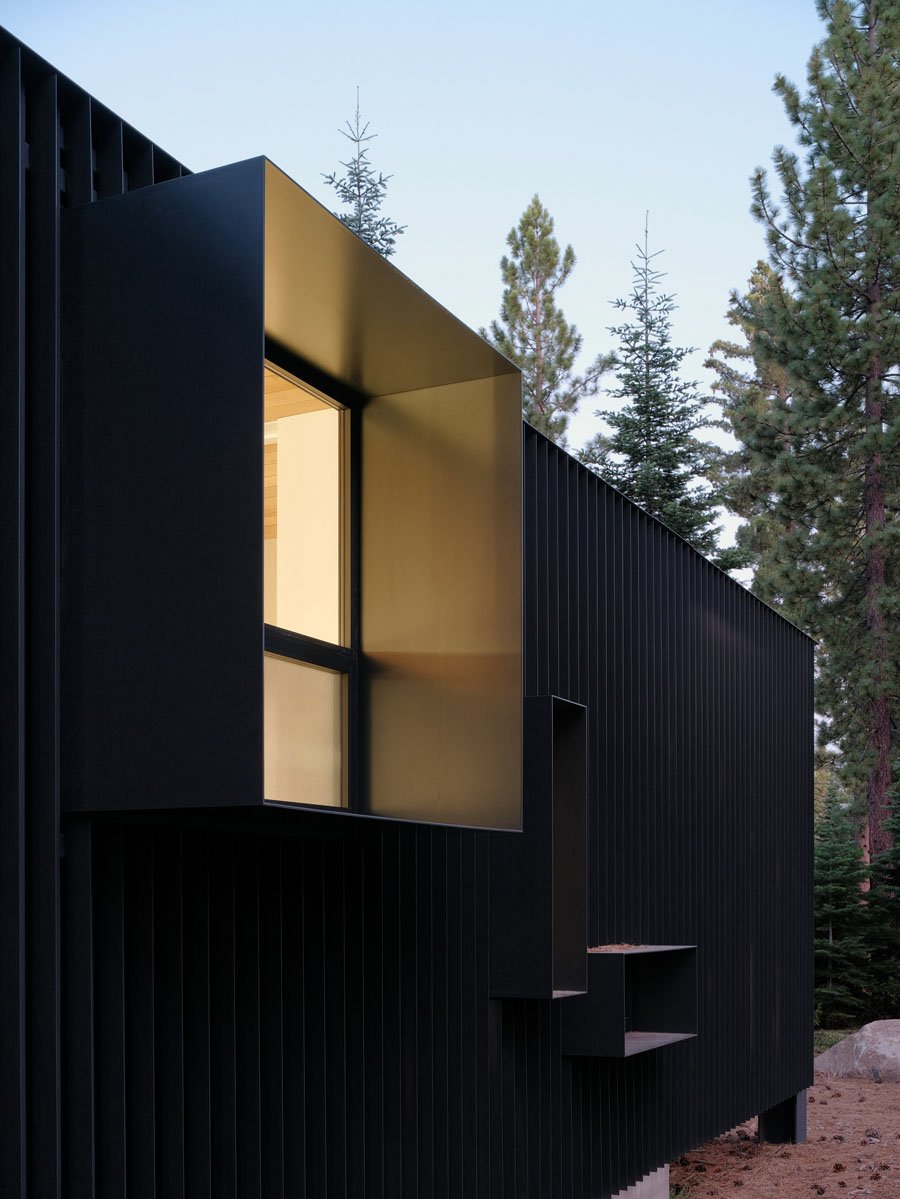
January 19, 2021
Faulkner Architects Designs a Home to Withstand Fire and Snow
The San Francisco–based firm’s latest project blends seamlessly into its thickly forested lot, subject to both forest fires and heavy snow.

Having built homes in Squaw Valley (home to the 1960 Winter Olympics) and many others throughout the Lake Tahoe region, San Francisco–based Faulkner Architects is no stranger to designing for snowy climates. Their latest project, a 4,500-square-foot vacation home in Truckee’s Martis Valley, also illustrates the firm’s careful attention to climate and site. With a client that wanted a secluded and tranquil home in the forest, Faulkner Architects carefully embedded the structure within the landscape that features over 100 trees including old-growth Jeffrey, Sugar pine, and White and Red fir.
“The landscape informs the planned intervention,” remarks Greg Faulkner, principal of Faulkner Architects. “The interesting aspect of the site comes from the fabric of light and dark woven through the screen of branches and tree trunks.”

It was that unique coloration as the sun moved throughout the two-acre property to the Sawtooth Ridge of the Sierra Nevada mountains beyond that influenced the materiality. The design, an elongated south-facing rectangle, yields the least invasive footprint as possible. Instead of being an object in the forest, the home is a welcoming collage of board-formed concrete (utilized for its thermal mass and ability to stabilize the home’s temperature), an ebonized steel rainscreen, and unfinished teak, which gives it a wonderful aroma.
“The rainscreen is built of three-by-three-inch angles spaced one inch apart, which repeat the texture and function of the bark of adjacent trees, protecting the vulnerable wood-framed portions of the house from wildfire,” says Faulkner. Per the Wildland-Urban Interface Code, roofs must be built to survive a fire for one hour, while all wall surfaces and overhangs must be protected. Thus, the only exterior wood on this house is protected via fire rated panels.

When one comes across the home, the front isn’t evident, freeing the architecture from hierarchy through a concealed, directional entry instead. “One associates the form and moves parallel to it prior to entering. Frank Lloyd Wright was known for this,” he says. The green translucent glass, which was chosen due to the color when the sun passes through, bathes the entrance in color and further connects it with the forest.
Inside, there are cut basalt floors, teak ceilings, white gypsum, and quarter-inch-thick galvanized, hand-polished steel fireplaces. Three-dimensional skylights wrap from the roof down the wall, providing views of the treetops by day and stars by night. The angled design captures a less harsh light, a quality favored by the clients. The design also connects the indoors and out through the wooden deck, which is shaded from the sun and snow.

In addition to checking off the homeowners’ brief, the house meets many criteria for a sustainable residence such as radiant heating, enhanced glazing, and mechanical electrical equipment. “Many of our projects are in the forest, so solar panels are difficult in an alpine environment due to snow cover,” Faulkner says. “Radiant floors use less energy than a forced-air system.”
While modest in size compared to many of the valley’s winter retreats, the home’s simple, yet surprising palette brings refinement to the woods.
You may also enjoy “John Wardle Renovates His Home to Reflect His Creative Process”
Would you like to comment on this article? Send your thoughts to: [email protected]
Register here for Metropolis’s Think Tank Thursdays and hear what leading firms across North America are thinking and working on today.
















